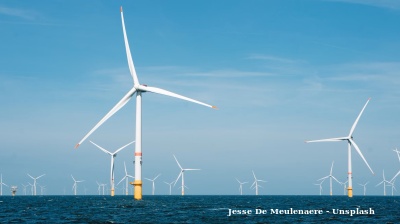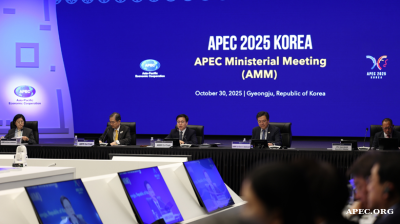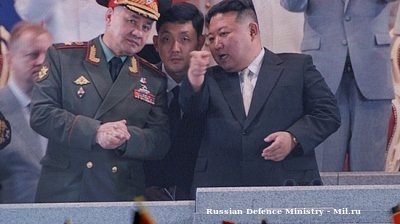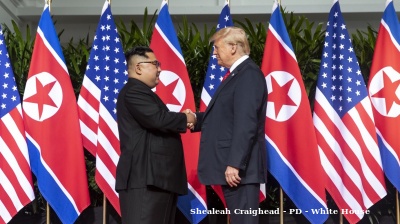In the northeast corner of East Asia, South Korea is quietly steering its energy future towards a delicate pro-nuclear, pro-renewables outcome. With eyes fixed firmly on 2050, policymakers in the capital Seoul are doubling down on a dual-track strategy: expanding nuclear power and renewables side by side.
The indications have been there for a while and with the nation’s overwhelmingly obvious preference for all things green in the long-term, the only real remaining question is whether or not this will in some way one day work to improve cross-border relations and possibly even power supplies to the North.
Bipolar portfolio
At present, Seoul’s “energy mix” is morphing into something that might have seemed improbable just a decade ago. In 2025, nuclear power will contribute roughly a third of the Republic of Korea’s total electricity output.
Indeed, the government’s latest energy white paper quietly signals an intent to at least maintain, if not grow, that proportion into the 2030s and beyond. The reason is simple in the eyes of many South Korean professionals: nuclear generated power is one of the few low-carbon sources capable of supplying baseload electricity - at scale - when demand spikes in the heat of summer and the oftentimes sub-zero temperatures of winter. That nuclear power is also deemed ‘dispatchable’ given the flexibility offered in the form of small-modular reactors, is an added bonus.
Beyond simple pragmatism, however, there is also increasing political capital to be seen in the shape of cooling towers. Nuclear energy for Korea offers energy security at a time when LNG markets are on a perpetual roller coaster ride and uranium yields compared to LNG are astronomically different.
On the more traditional renewables front, for South Korea, primarily solar and offshore wind – the future is similarly bright. Solar arrays can be seen across the peninsula and are highly visible atop municipal rooftops, parking areas and farmland, while offshore wind projects in the Yellow Sea are pushing past the 100-GW mark. As a result, by 2035, renewables could well supply between 40 and 50% of the country’s electricity in a shift powered by both policy incentives and cheaper solar panels. By 2050, a ministerial blueprint discussed at a recent power show in the southern city of Busan, hints at a nation hoping to see 60% of the grid powered by renewables.
Taken together, nuclear’s ever-ready baseload supply coupled to the range of options open to renewables will slowly push fossil fuel use into the corner and eventually out of the door.
Cross-border option – powering the North
Even as Seoul’s domestic energy ambitions evolve, officials still cast a wary eye across the 38th parallel. The idea of an inter-Korean electricity link may sound pie-in-the-sky to some but at the same late-August ‘Energy Super Week’ which encompassed the 2025 World Climate Industry Expo and ministerial meetings, the issue came up more than once.
The concept was simple in the eyes of many of those spoken to by AsiaElec at the Bexco exhibition centre in Busan - North Korea is family.
And with its vast but under-utilised hydroelectric resources and mountainous terrain, any power first shipped to the north could eventually be paid back many times over if properly developed in tandem with the South.
In exchange, Seoul’s modern grid and renewable surplus could bolster the North’s blackout-prone networks in what would be seen as a win-win, albeit an outcome that hinges entirely on geopolitics.
Research shows that studies conducted under soft diplomacy auspices, have already been carried out.
Whether that vision is realistic before 2050 is up in the air - for now …..
Policy at play
Backing these projections and far more influential even that industry movers and shakers in Busan is a web of South Korean government initiatives. First, the Renewable Portfolio Standard (RPS) which dates back to 2012 and has been ramped up significantly in the 13-years since. One key factor is a requirement placed on utilities to source upwards of 35% of electricity from renewables by the early 2030s.
Added to this, feed-in tariffs (FiTs) for solar and wind persist in-sync with local government and wider national government incentives – an issue making Busan, Korea’s second city, particularly attractive at the residential level, regional government staff told AsiaElec.
On the nuclear front, Seoul is now committed to keeping its reactors working and barely a week goes by without news of plans for new units, both in the next-generation large-scale and SMR format.
In the form of SMRs in particular, by 2050, it is far from unrealistic to expect SMRs at home to be making meaningful contributions to the grid supply in more remote locations and offshore islands, one KEPCO official said in Busan.
Pre-2050 challenges
The path to 2050 will throw up challenges however. Nuclear cost overruns, safety anxieties in local communities and probable public opposition will crop up from time to time. Renewables too will face issues even with all the pros they offer. A retooled grid infrastructure layout in some areas will have to be put in place as will large-scale investment in storage, smart-grid systems and demand-response mechanisms.
And of course if links to North Korea are to be realised any time soon, the relationship with Pyongyang in the North would have to thaw considerably. At any point in time a lone missile test or diplomatic flare-up could reset any progress made.
Even so, with South Korea’s energy narrative to 2050 and pre-stated goals in terms of capacity as optimistic as they are, Seoul has set nuclear and other forms of renewable energy on the road to success. Together, these two forms of power generation will combine to do the heavy lifting for the South’s millions, and will do so with time – and energy – to spare.
This is the first in a series of pieces on South Korean power generation, with company interviews, nationwide and local area analysis to follow in the coming weeks.
bneGREEN

The Arctic and Antarctica record "off the charts" heat as polar warming accelerates
Parts of both the Arctic and Antarctic have experienced historically high temperatures in recent weeks, with weather stations in East Antarctica recording record-breaking warmth for the month of October, alarming climate scientists.

Giant glacier chunk breaks away in Tajikistan, mountain villages put on alert
Situation serves as reminder that climate crisis threatens to wreak havoc in Central Asian country.

Singapore’s green pivot – headline grabbing but still limited
Forays into offshore wind via regional cooperation with neighbours, and forward-looking bets on hydrogen and low-carbon fuels are making headlines, but the scale required to wean a heavily gas-dependent system off fossil fuels is still daunting.
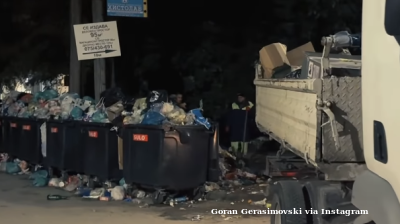
North Macedonia's Skopje tackles mounting waste and rodent crisis
Locals say the problems in Skopje's Centar municipality worsened during the local election period when political campaigning took precedence over maintenance.
